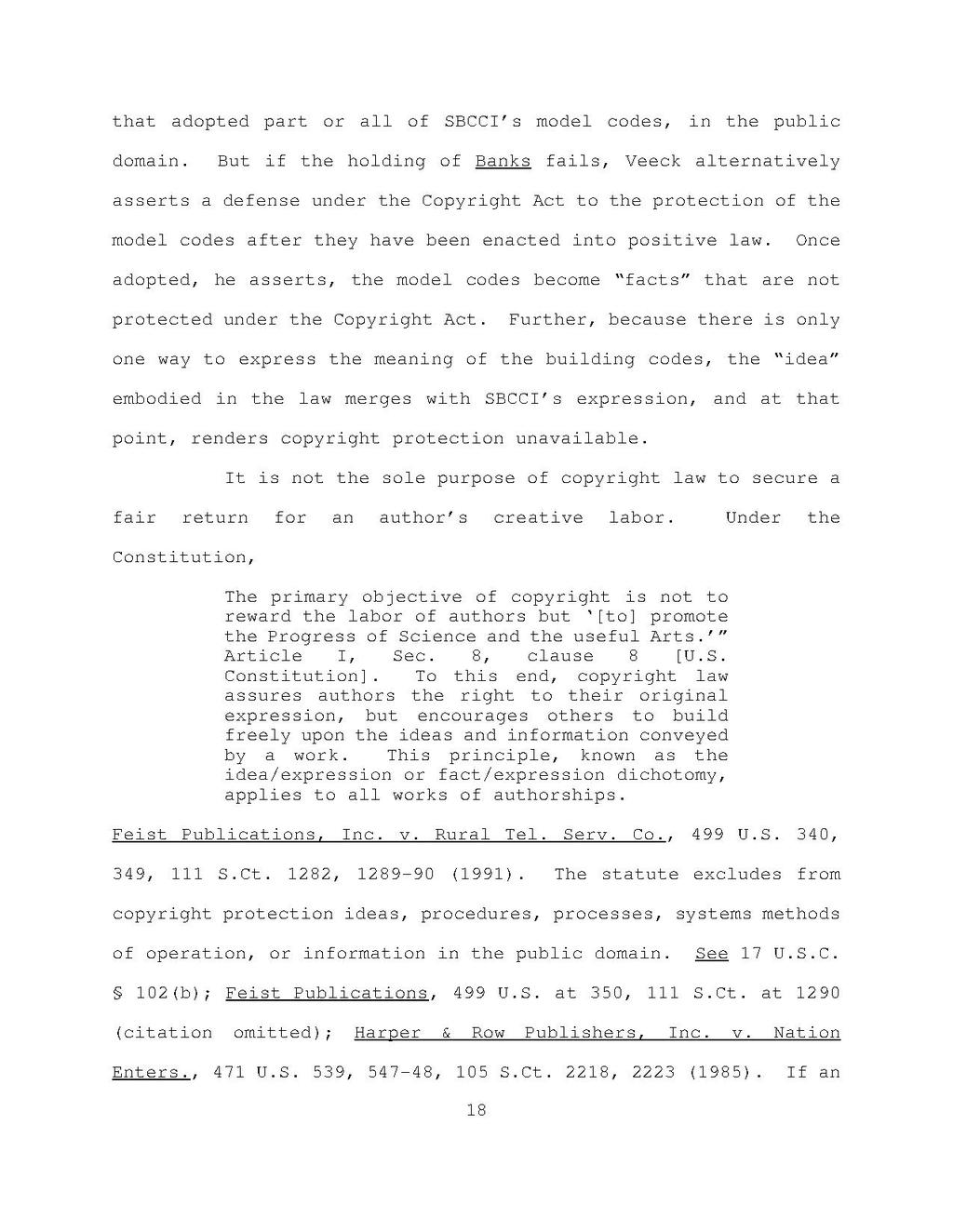that adopted part or all of SBCCI's model codes, in the public domain. But if the holding of Banks fails, Veeck alternatively asserts a defense under the Copyright Act to the protection of the model codes after they have been enacted into positive law. Once adopted, he asserts, the model codes become "facts" that are not protected under the Copyright Act. Further, because there is only one way to express the meaning of the building codes, the "idea" embodied in the law merges with SBCCI's expression, and at that point, renders copyright protection unavailable.
It is not the sole purpose of copyright law to secure a fair return for an author's creative labor. Under the Constitution,
The primary objective of copyright is not to reward the labor of authors but '[to] promote the Progress of Science and the useful Arts.'" Article I, Sec. 8, clause 8 [U.S. Constitution]. To this end, copyright law assures authors the right to their original expression, but encourages others to build freely upon the ideas and information conveyed by a work. This principle, known as the idea/expression or fact/expression dichotomy, applies to all works of authorships.
Feist Publications, Inc. v. Rural Tel. Serv. Co., 499 U.S. 340, 349, 111 S.Ct. 1282, 1289-90 (1991). The statute excludes from copyright protection ideas, procedures, processes, systems methods of operation, or information in the public domain. See 17 U.S.C. § 102(b); Feist Publications, 499 U.S. at 350, 111 S.Ct. at 1290 (citation omitted); Harper & Row Publishers, Inc. v. Nation Enters., 471 U.S. 539, 547-48, 105 S.Ct. 2218, 2223 (1985). If an
18
